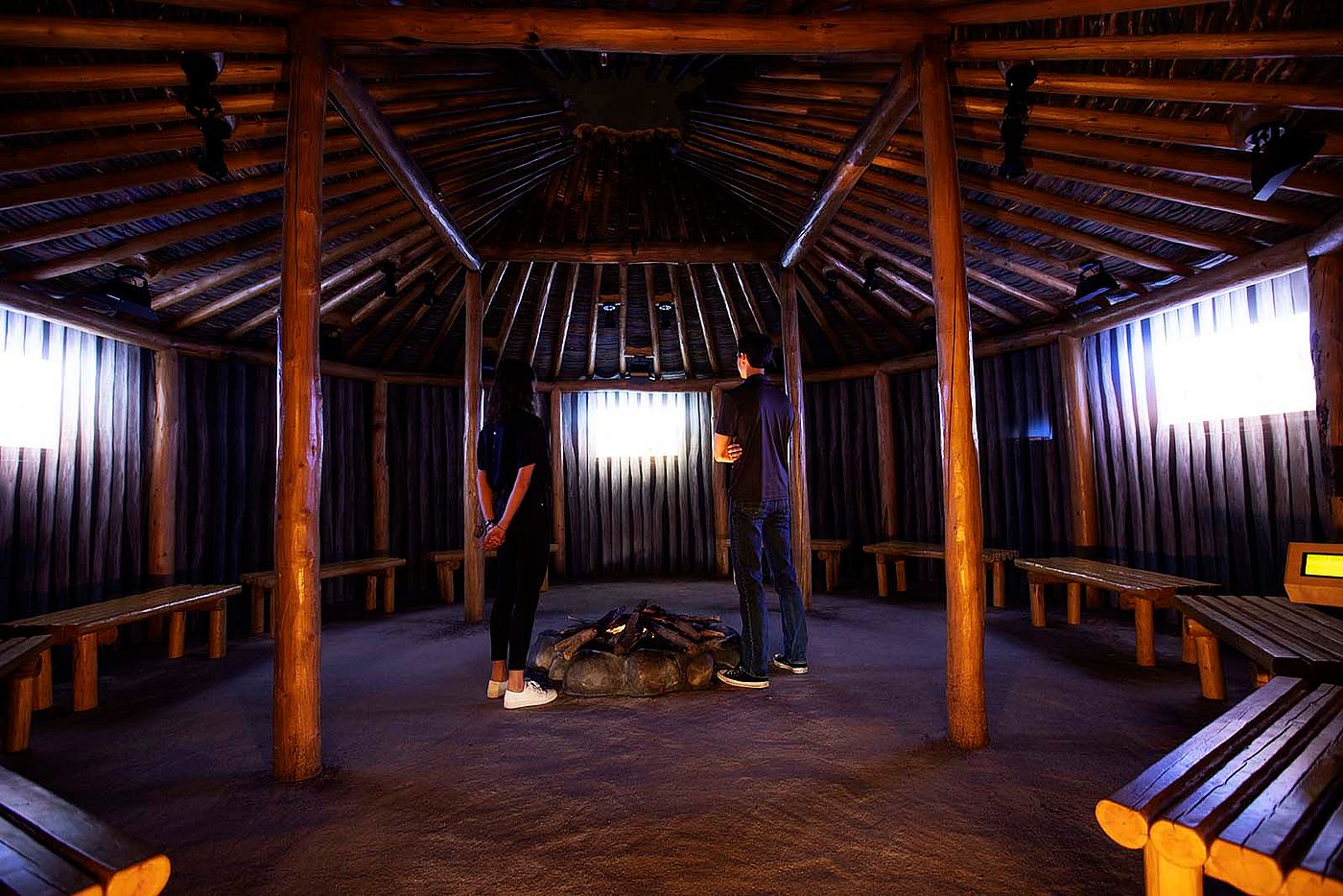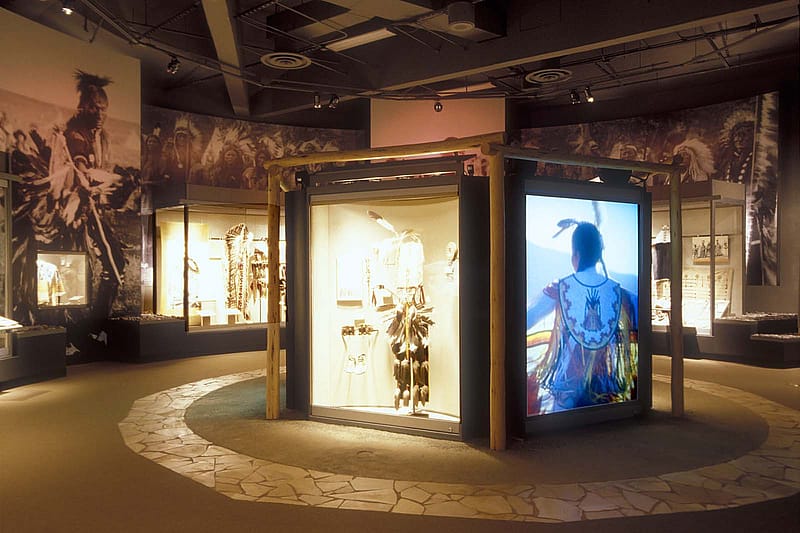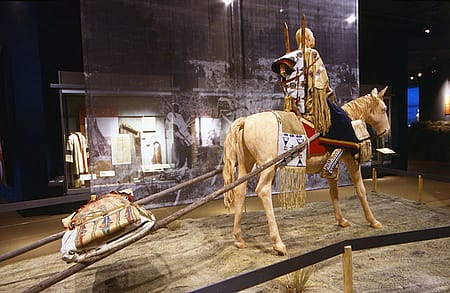Exhibits

Plains Indian Museum Exhibits
With artifacts, images, personal narratives, and technology, Plains Indian Museum exhibits interpret the many stories of the Native people of the Plains; their unique and individual cultures, arts, traditions, histories, and their lives today.
Adversity and Renewal
The Adversity and Renewal gallery takes the visitor on a journey that looks respectfully at the past, understands the present, and has an eye to the future. Throughout the gallery, the objects reflect the changes and innovations that have taken place in the material and spiritual cultures of Plains people since being placed on reservations in the late 1800s.
The centerpiece of the gallery is a reproduction of the 1911 log house that belonged to Standing Bear, Oglala Lakota, in the Wounded Knee District of Pine Ridge, South Dakota. Arthur Amiotte, Lakota artist and scholar, guided the recreation of his great-grandfather’s home. His voice and that of Gloria Goggles, Lakota, interpret the house’s nurturing environment, full of innovation and tradition, that teaches important lessons to future generations.
Buffalo and the People
Buffalo and the People gallery introduces visitors to the economic and spiritual importance of the buffalo to the Native people of the Plains. While touring the gallery, you can learn more about Hunting and Warfare traditions, Men’s Art, and the many practical uses of Buffalo among Plains people.
Northern Plains men’s buffalo horn bonnets and a Mandan buffalo dance mask are in the center of the gallery, introduced by the voice of Joe Medicine Crow, Absaroke. Members of warrior societies, wearing such bonnets, performed dances to capture the sacred power of the buffalo, to assist them in hunting and in providing meat for their families.
Honor and Celebration
The Honor and Celebration gallery addresses the ceremonial aspects of Plains life, both past and present. Exploring the gallery, you learn about the Sacred Arts of women’s quilling and beadwork societies. Warriors, Leaders and Healers explains how the men’s societies prepared their members for the various roles and challenges through their lives. Then glimpse into the most sacred Plains ceremony—the Sun Dance—a united prayer for the life of all things and peoples of this world.
A dance arbor lies in the center of the gallery where you can experience the Plains Indian Museum Powwow. While the dancers and drums perform, the visitor gets a better understanding of how music and dance are fundamental to Plains cultures.

Land of Many Gifts
Focusing on village life in the historic era, the Land of Many Gifts gallery showcases the numerous contributions of women within Plains societies. Learn about the prosperous gardens owned by the women of the Upper Missouri River tribes. Whether a young child or a grandparent, every person in a village has an important role, seen in Children and Elders. Observe how Women’s Art is about more than artistic beauty, it also has important social and economic functions.
The centerpiece of the gallery is an Absaroke Ashtáale (Crow Lodge or Tipi), one of the most beautiful and practical shelters ever invented. The voice of Alma Snell, Absaroke, granddaughter of Pretty Shield, speaks about life in a lodge, and Louella Johnson, Absaroke, sings lullabies.
Tsistsistas (Cheyenne) Migration
In the Tsistsistas (Cheyenne) Migration scene, the visitor is invited to see and hear a nineteenth century Cheyenne family traveling on their seasonal rounds. While exploring the gallery, you can learn what role dogs and horses played in a group’s ability to migrate, and also discover why trade had been essential to the overall economics of the Plains since ancient times. Finally, find out how the seasonal migrations enabled tribes to use and maintain the vast resources of the Plains.

